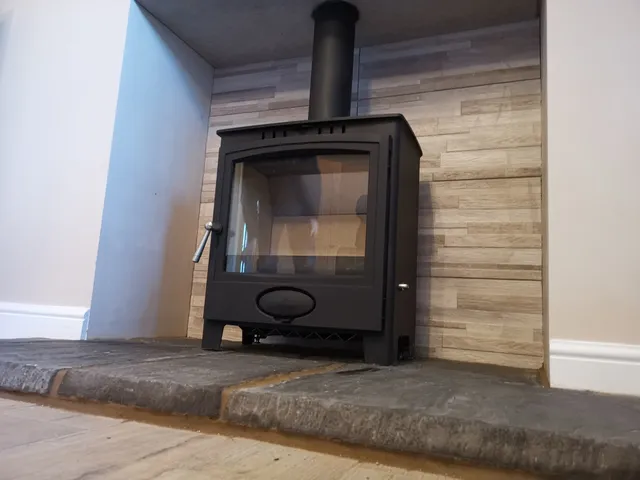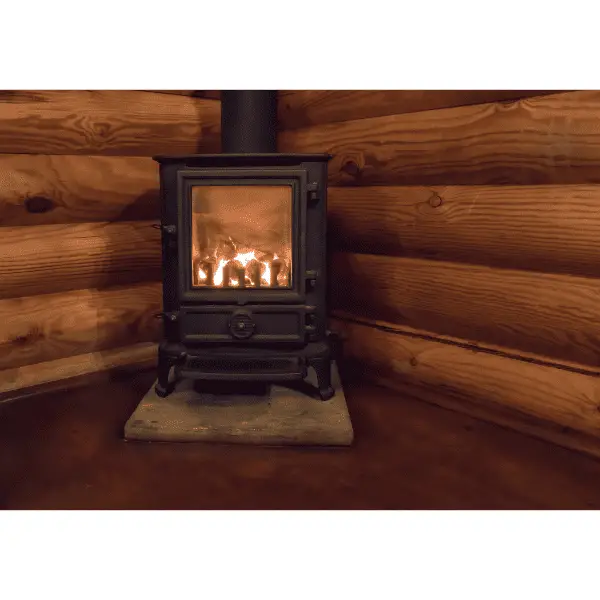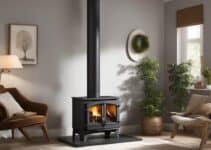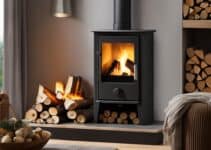When installing a log burner, it’s important to follow appropriate guidelines for its clearance.
But this leads to the question, how much clearance does a log burner need? It’s generally advised that you leave at least 150mm of clearance between your log burner and any non-combustible materials, such as brick, tile or stone.
These are the most common materials for hearths, and it shouldn’t be too difficult to achieve if you’re fitting a modern, fully contained log burner.
There are some exceptions to this rule depending on the material and hearth configuring you’re working with. We’ll explore these in more detail below, so read on for the answers.
What Clearance Do You Need Around a Wood Burner?
The standard advice is that you need a minimum of 150mm of clearance around your wood burner for non-combustible materials. This includes the surrounding walls and the hearth surface.
Bear in mind that your stove manufacturer may have its own guidelines for log burner clearance around its units. If not, aim for 150mm as a minimum.
However, building regulations state that this must be increased around combustible materials. You’ll only need to think about this if your mantlepiece is made from wood, which isn’t super common.
If it is, you’ll need to ensure there’s a distance between your flue and the hearth that’s triple the diameter of the flue.
For example, if your flue is 150mm, the distance to the mantlepiece must be 450mm. This is often unfeasible due to how fireplaces are set up.

You can reduce these requirements by fitting a twin-wall insulated system and heat guard. Doing so prevents most of the risk of the mantlepiece catching fire, which might sound unlikely, but it could happen.
Clearance Around Stove
The hearth itself has clearance guidelines too. First, it must be made from a non-combustible material, such as granite, stone, or tiles.
Then, the size and clearance are dependent on the power of your log burner.
If it won’t raise the temperature of the hearth above 100 degrees C, the hearth must be at least 300mm long and have 150mm of clearance to either side of the stove. Its full area should be at least 840mm squared and 12mm thick.
But if the stove will raise the hearth temperature above 100 degrees C, or you don’t know whether it will, your hearth must be 250mm thick. This is to prevent damage to your home, particularly the floor, which will often be made of wood.
How Far Away from the Wall Should a Wood Burning Stove Be?
A wood burning stove should be at least 150mm away from walls, but aim for at least 200mm. Larger gaps reduce the risk of fires and damage, even if the surrounding walls are non-combustible.
However, leaving a clearance gap around your stove can also help with heat transfer and dissemination around the room. At the most basic level, a wood burner works using heat radiation.
The fire creates heat inside the unit, which passes into the stove to radiate out into the room.
Considering heat radiates from all sides, having clearance around the stove means it’s not transferring directly into the hearth and surrounding walls. Although radiation is the primary form of heat transfer, there’s a level of convection too.
Increasing the log burner clearance gap ensures more of the stove’s area is exposed to cool air, which increases convection.
Log Burner Distance from Wall
In short, a wood burning stove with at least 150mm away from your wall will increase its efficiency. An air gap encourages heat flow around the room and means less of this precious heat energy is being sucked into the walls.

How Close Can a Log Burner Be to a Brick Wall?
A log burner can be as close as 100mm to a brick wall, which can be reduced to as little as 25mm for clearance at the back of the stove. Brick is a very safe material to use around log burners because it’s not a good thermal conductor, meaning there’s little risk of it catching fire or causing damage.
However, you must remember that more air clearance around a stove means better efficiency. Reducing the air gap means less heat can transfer into the room, resulting in you feeling less benefit from actually running the stove.
If you’re looking for a new log burner for your fireplace, it’ll be worth researching the kind of options you have. There are some very small and highly efficient modern log burners that’ll fit in old fireplaces with decent clearance on all sides.
Although you won’t be able to burn as much wood at once, a larger air gap will be more beneficial in the long run.
Make sure you speak to a local stove installer to find out what would be the best size log burner to fit in your fireplace. They’ll be able to offer specific advice based on your fireplace’s dimensions, meaning you can get the right balance between size and efficiency.

Minimum Clearance Around Wood Burning Stove
The bottom line is that there aren’t any real legal regulations around wood burning stove clearance, other than those relating to combustible materials.
The clearance guidelines mentioned above are just that: guidelines. However, if you want your wood-burning stove to be as efficient as possible, it’s best to use them as a minimum log burner clearance gap for improved airflow.



